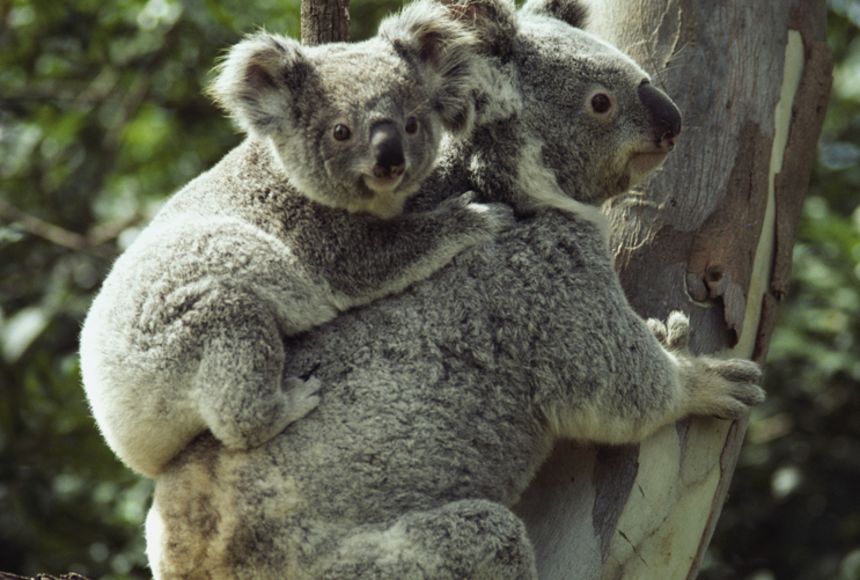Any number of characteristics can vary among individuals of a given species — some may be larger, hairier, fight off infections better, or have smaller ears. These characteristics are largely determined by their genes, which are passed down from their parents and subsequently passed down to their own offspring. Some of these characteristics, or traits, provide competitive advantages like speed, strength, or attractiveness. If those traits are particularly helpful, individuals with those traits will produce more offspring than those without. Over generations, the number of individuals with that advantageous trait, or adaptation, will increase until it becomes a general attribute of the species.
Structural and Behavioral Adaptations
An adaptation can be structural, meaning it is a physical part of the organism. An adaptation can also be behavioral, affecting the way an organism responds to its environment.
An example of a structural adaptation is the way some plants have adapted to life in dry, hot deserts. Plants called succulents have adapted to this climate by storing water in their short, thick stems and leaves.
Seasonal migration is an example of a behavioral adaptation. Gray whales (Eschrichtius robustus) migrate thousands of kilometers every year as they swim from the cold Arctic Ocean in summer to the warm waters off the coast of Mexico to winter. Grey whale calves are born in the warm southern water, and then travel in groups called pods to the nutrient-rich waters of the Arctic.
Adaptations that develop in response to one challenge sometimes help with or become co-opted for another. Feathers were probably first adaptations for tactile sense or regulating temperature. Later, feathers became longer and stiffer, allowing for gliding and then for flight. Such traits are called exaptations.
Some traits, on the other hand, lose their function when other adaptations become more important or when the environment changes. Evidence of these traits remain in a vestigial form — reduced or functionless. Whales and dolphins have vestigial leg bones, the remains of an adaptation (legs) that their ancestors used to walk.
Habitat
Adaptations often develop in response to a change in the organisms’ habitat.
A famous example of an animal adapting to a change in its environment is England's peppered moth (Biston betularia). Prior to the 19th century, the most common type of this moth was cream-colored with darker spots. Few peppered moths were gray or black.
As the Industrial Revolution changed the environment, the appearance of the peppered moth changed. The darker-colored moths, which were rare, began to thrive in the urban atmosphere. Their sooty color blended in with the trees, which were stained by industrial pollution. Birds couldn’t see the dark moths as well, so they ate the cream-colored moths instead. The cream-colored moths began to make a comeback after the United Kingdom passed laws that limited air pollution.
Speciation
Sometimes, an adaptation or set of adaptations develops that splits one species into two. This process is known as speciation.
Marsupials in Oceania are an example of adaptive radiation, a type of speciation in which species develop to fill a variety of empty ecological niches. Marsupials, mammals that carry their developing young in pouches after a short pregnancy, arrived in Oceania before the land split from Asia. Placental mammals, animals that carry their young to term in the mother’s womb, came to dominate every other continent, but not Oceania. Koalas (Phascolarctos cinereus), for instance, adapted to feed on eucalyptus trees, which are native to Australia. The extinct Tasmanian tiger (Thylacinus cynocephalus) was a carnivorous marsupial and adapted to the niche filled by big cats, like tigers, on other continents.
The cichlid fish found in many of Africa’s lakes exhibit another type of speciation, sympatric speciation. Sympatric speciation is the opposite of physical isolation. It happens when species share the same habitat. Adaptations have allowed hundreds of varieties of cichlids to live in Lake Malawi. Each species of cichlid has a unique, specialized diet: One type of cichlid may eat only insects, another may eat only algae, another may feed only on other fish.
Coadaptation
Organisms sometimes adapt with and to other organisms. This is called coadaptation. Certain flowers produce nectar to appeal to hummingbirds. Hummingbirds, in turn, have adapted long, thin beaks to extract the nectar from certain flowers. When a hummingbird goes to feed, it inadvertently picks up pollen from the anthers of the flowers, which is deposited on the stigma of the next flowers it visits. In this relationship, the hummingbird gets food, while the plant’s pollen is distributed. The coadaptation is beneficial to both organisms.
Mimicry is another type of coadaptation. In mimicry, one organism has adapted to resemble another. The harmless king snake (sometimes called a milk snake) has adapted a color pattern that resembles the deadly coral snake. This mimicry keeps predators away from the king snake.
The mimic octopus (Thaumoctopus mimicus) has behavioral as well as structural adaptations. This species of octopus can copy the look and movements of other animals, such as sea snakes, flatfish, jellyfish, and shrimp.
Coadaptation can also limit an organism’s ability to adapt to new changes in their habitat. This can lead to co-extinction. In southern England, the large blue butterfly adapted to eat red ants. When human development reduced the red ants’ habitat, the local extinction of the red ant led to the local extinction of the large blue butterfly.

